A workshop “
Asian Diasporas in the Pacific, history of representations and contemporary issues” (parts
1 &
2) hosted by the Asia-IMASIA network’s biannual conference took place in Paris on September 26th 2007. An opportunity to draw a first state of current research on these Asian Pacific communities, often considered in the Pacific islands as an ideal-type of “foreignness” symbolising wider evolutions such as economic globalisation, cultural and religious diversity, migration and urbanisation. Here are some outlines.

The last report of the
UNFPA (United Nations Found for Populations) in 2006 underlined the fact that Oceania has the largest concentration of immigrants in its population (15,2 per cent) of any region, mostly
in New Zealand and Australia.
Paola Voci, lecturer in Chinese language and cultures at the Otago University (Dunedin) sent us a communication on the Chinese community in New Zealand. According to the 2006 Census, 9.2 per cent of New Zealand population is now from Asian origin, 2/3 of it concentrated in Auckland area. The more numerous community are Chinese people – 147570 and a 40.5 per cent increase between 2001 and 2006. The other main groups are Indians (104583, +68.2 per cent) and Koreans (30792, +61.8 per cent).
The New Zealand migration policies explain for a large part the deep religious diversity that can be observed today: Buddhists, Hindus, Sikhs, but also Korean or Samoan churches, etc… a cultural patchwork combined with the diversity of Protestantism (see for example
my post on August 16th 2006 on Brethren communities).
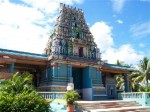
In Fiji, as I wrote in
last December, the several coups that occurred since 1987 are all related to the coexistence in this country – with a proportion close to 50/50 – of indigenous Fijians (“Ethnic Fijians”) and Fijians from Indian descent (“Indo-Fijians”), who were brought to Fiji at the end of the 19th century by the British colonial authority to work in the sugar cane plantations. The majority of them are Hindus, with about 15 per cent of Muslims and a small Christian minority.
Some Christian churches, like the Methodist Church which makes 36 per cent of the population (66 per cent of the Ethnic Fijians) today advocates a conception of Fijian identity based on the land (Indo-Fijians are not allowed to be land owners), traditions and Christianity. They promote the establishment of a Christian state that would lead to the exclusion of Indo-Fijians from the government. What they call “reconciliation” sometimes means nothing else than the conversion of Indo-Fijians to Christianity, considered as the only way to provide national unity.
The Pacific Chinese communities are often very active in commerce (in many islands of French Polynesia, “to go to the Chinese” means to go to the deli). They have been stigmatised for long by colonial (and sometimes religious) authorities or local populations, especially during economic crisis. In the interwar years, the French colonial milieu in
Tahiti was particularly focused on the “Chinese peril”

endangering a Polynesian people described as “primitive, naïve and infantile” by the Abbot Rougier. Unfortunately, similar reflections can still be heard sometimes in today conversations. The history of the Chinese in Tahiti has been presented in several publications and academic works, among the more recent ones: the book of B. Saura, Tinito (Au Vent des îles, 2002), Identité hakka à Tahiti by Ernest Sin Chan (Teite, 2005) – who participated in the workshop – and the Ph.D. dissertation of A.-C. Trémon, “Les Chinois en Polynésie française. Configuration d’un champ des identifications”, defended in 2005 at the EHESS.
My own research on Pentecostalism in French Polynesia led me to analyse the circumstances of the rise of Pentecostalism within the hakka community of Tahiti, in the beginning of the 60s, and the establishment of the first Pentecostal church in French Polynesia, the Alleluia Church – a Chinese speaking church (see my article
“Pentecostalism in French Polynesia, a hakka story”). The Catholic church has also established a Chinese parish in Tahiti, following the guidelines of Vatican II Council for a better understanding of local languages and cultures.
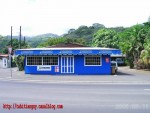
In many Pacific islands, Chinese storekeepers have been targeted by riots linked to political tensions: during demonstrations against the Tongan government and for democratic reforms in November 2006 (see also
my note of September 13th 2006), several Chinese shops were burnt in the centre of Nuku’alofa, the Capital city. In Honiara, the Capital city of Solomon Islands, several hundreds of Chinese storekeepers got in similar troubles in April 2006, as underlined by P. de Deckker in an article published in June 2007 (
Tahiti Pacific magazine): they were accused to have financially supported the campaign of the newly elected Prime minister – who finally had to step down.
Other Asian communities are less exposed and have not often attracted the interest of researchers. This workshop gave us the opportunity to hear about the Javanese community in New Caledonia with J.-L. Maurer (who has published in 2006 a book untitled “Les Javanais du caillou. Sociologie historique de la communauté indonésienne de Nouvelle-Calédonie, Maison des sciences de l’homme) and Dominique Jouve (who has studied the representations of New Caledonia Javanese and Vietnamese in literature). Virginie Riou also presented the journeys of Tonkin workers and they descendants in New Hebrides – Vanuatu – from 1920 until today.
Besides, the small Pacific states play a significant role in the relations between Western and Asian countries as well as in the competition between Taiwan and Continental China, who are both seeking their diplomatic support within the UNO Assembly. Fabrice Argounes (a Ph.D. student at Science Po Bordeaux), and Sarah Mohamed-Gaillard (INALCO) presented the historical, geopolitical and economic dimensions of these issues. According to P. de Deckker in the article quoted above, “Taiwan currently has the support of the Marshall islands, Kiribati, Palau, Tuvalu and the Solomon islands”. This represents 1/5 of its diplomatic supports, after having lost the support of Tonga (in 1998), Nauru (in 2002) and failed to get the support of Vanuatu (in 2004). A hard competition, in which financial help to fragile island economies play a major role.
* Illustrations: a celebration within the Chinese community in Auckland (New Zealand); Hindu temple in Nadi (Fiji); Chinese New Year at the Maria no te hau cathedral in Tahiti; Chinese store in Tahiti (this photo is part of a remarkable series that can be seen on the blog “
Tahitian Guy”.

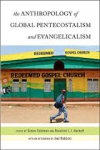 Deux livres sont parus récemment, auquel j'ai contribué : The Anthropology of Global Pentecostalism and Evangelicalism, dirigé par Simon Coleman et Rosalind Hackett (New York University Press) et Christianity, Conflict, and Renewal in Australia and the Pacific, sous la direction de Fiona Magowan et Carolyn Schwarz (Brill).
Deux livres sont parus récemment, auquel j'ai contribué : The Anthropology of Global Pentecostalism and Evangelicalism, dirigé par Simon Coleman et Rosalind Hackett (New York University Press) et Christianity, Conflict, and Renewal in Australia and the Pacific, sous la direction de Fiona Magowan et Carolyn Schwarz (Brill).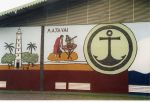 In most of the Polynesian islands, an annual event commemorates the arrival of the first (generally Protestant) missionaries. People dance, sing and re-enact the original scene, when European missionaries or Polynesian “teachers” – notably those from the Society Islands – on one side, and the local populations on the other side, met together. Thus in French Polynesia, March 5 – a public holiday – is officially the day of “Gospel’s arrival”, commemorating the arrival in 1797 of the Duff, a sailing ship chartered by the London Missionary Society. In addition to this Tahitian date, many islands celebrate the landing of Christianity on their own shores. The performance often includes many comic relieves, with actors dressed in Western 19st century suits and wearing top-hats miming wild-eyed British missionaries facing new languages and customs.
In most of the Polynesian islands, an annual event commemorates the arrival of the first (generally Protestant) missionaries. People dance, sing and re-enact the original scene, when European missionaries or Polynesian “teachers” – notably those from the Society Islands – on one side, and the local populations on the other side, met together. Thus in French Polynesia, March 5 – a public holiday – is officially the day of “Gospel’s arrival”, commemorating the arrival in 1797 of the Duff, a sailing ship chartered by the London Missionary Society. In addition to this Tahitian date, many islands celebrate the landing of Christianity on their own shores. The performance often includes many comic relieves, with actors dressed in Western 19st century suits and wearing top-hats miming wild-eyed British missionaries facing new languages and customs.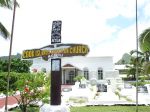 It may be in the Cook Islands, a tiny Polynesian State (in free association with New Zealand) located west of French Polynesia, that this annual performance is the more high-colored. Here too, each island used to have its own commemoration day, for example July 25 on the main island, Rarotonga. But on this island, the biggest event is now hold on October 26 and commemorates the arrival of missionaries led by the Rev. John Williams in the island of Aitutaki on October 26th 1821. It's a national celebration: “the National Gospel Day”. At this occasion, the six parishes of the Cook Island Christian Church (the Protestant Church stemming from this missionary history) prepare religious dramas – Nuku in local tongue. These nuku not only re-enact the October 26 event, but also show some significant events of recent history: in 2007, spectators could even watch a local version of the suicide aircraft attacks on The World Trade Center! Until the 1990s, it was a competition between the parishes, then the competitive side of things was dropped. Today, even if this no more a matter of official competition, parishes still compete on imagination. The website
It may be in the Cook Islands, a tiny Polynesian State (in free association with New Zealand) located west of French Polynesia, that this annual performance is the more high-colored. Here too, each island used to have its own commemoration day, for example July 25 on the main island, Rarotonga. But on this island, the biggest event is now hold on October 26 and commemorates the arrival of missionaries led by the Rev. John Williams in the island of Aitutaki on October 26th 1821. It's a national celebration: “the National Gospel Day”. At this occasion, the six parishes of the Cook Island Christian Church (the Protestant Church stemming from this missionary history) prepare religious dramas – Nuku in local tongue. These nuku not only re-enact the October 26 event, but also show some significant events of recent history: in 2007, spectators could even watch a local version of the suicide aircraft attacks on The World Trade Center! Until the 1990s, it was a competition between the parishes, then the competitive side of things was dropped. Today, even if this no more a matter of official competition, parishes still compete on imagination. The website  The last report of the
The last report of the  In Fiji, as I wrote in
In Fiji, as I wrote in  endangering a Polynesian people described as “primitive, naïve and infantile” by the Abbot Rougier. Unfortunately, similar reflections can still be heard sometimes in today conversations. The history of the Chinese in Tahiti has been presented in several publications and academic works, among the more recent ones: the book of B. Saura, Tinito (Au Vent des îles, 2002), Identité hakka à Tahiti by Ernest Sin Chan (Teite, 2005) – who participated in the workshop – and the Ph.D. dissertation of A.-C. Trémon, “Les Chinois en Polynésie française. Configuration d’un champ des identifications”, defended in 2005 at the EHESS.
endangering a Polynesian people described as “primitive, naïve and infantile” by the Abbot Rougier. Unfortunately, similar reflections can still be heard sometimes in today conversations. The history of the Chinese in Tahiti has been presented in several publications and academic works, among the more recent ones: the book of B. Saura, Tinito (Au Vent des îles, 2002), Identité hakka à Tahiti by Ernest Sin Chan (Teite, 2005) – who participated in the workshop – and the Ph.D. dissertation of A.-C. Trémon, “Les Chinois en Polynésie française. Configuration d’un champ des identifications”, defended in 2005 at the EHESS.